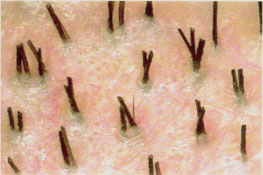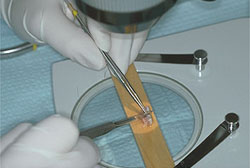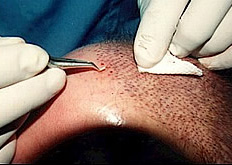Introduction
It is understood that hair growth is influenced by several parameters. Therefore, any alopecia consultation justifies a good clinical exam and a full evaluation analysis to establish a reliable diagnosis that is a pre-requisite for any treatment.
Objective
After an exhaustive physical examination and evaluation tests have been completed, it is very important to comfort patient about his condition. Current advances in alopecia therapy help to propose an adequate medical or surgical treatment adapted to the stage of hair loss and hair thinning process. Stabilization of hair loss will be reached after few weeks or few months of treatment. This will lead us to propose men or women a total reconstruction of their baldness through hair transplantation with micrografts done in a natural fashion.
Various classifications of male androgenetic alopecia have been described (Hamilton, Ludwig). In fact, all the classification schemes proposed so far are only topographic. A more objective, accurate and detailed approach to classify male and female baldness is needed.
The Bouhanna Dynamic Multifactorial Classification with various parameters that can be quantitated and computerized allow a precise evaluation of the parameters such as fixed distances of the face, measurements of the balding area and the hairy area, scalp laxity and thickness, and covering power of hair. This includes density, caliber, shape, length, growth rate, and hair color. The digitalized phototrichogram allows a precise hair count for density and anagen-telogen ratio.
Results
All this measures proved to be efficient during the fluctuations of various parameters in hormonal, finasteride, minoxidil and platelet rich plasma (PRP) treatments. It also helps to determine precisely surgical indications of hair transplant and the stage of maximal baldness according to a better assessment of the baldness evolution during the patient's life.
Conclusion
This approach will lead to a better evaluation of the evolution of androgenetic alopecia in both sexes, either spontaneously or under treatment. It can also be used in the evaluation of any form of cicatricial alopecia (localized or diffused), leading to an objective follow-up of the alopecia and the efficacy of the medical or surgical treatments.
References
Bouhanna P. The macrophototrichogram and a macrophotographic study of the scalp. Bioengineering and the Skin, 1985 ; 1(3) : 265
Bouhanna P. Multifactorial clasification of male and female androgenetic alopecia. Dermatol. Surg., 2000; 26: 555-561.







